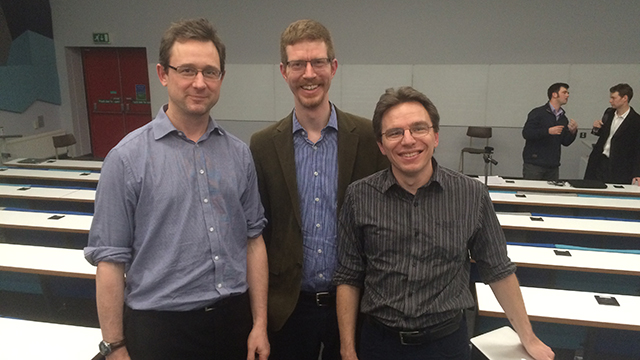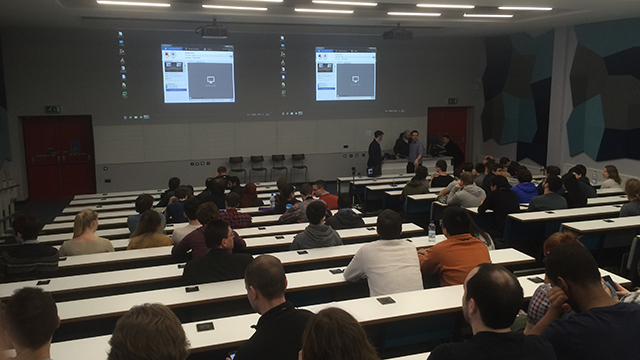Researchers from Cardiff University have played a major role in detecting the first black hole merger using gravitational waves.

In a colloquium on Wednesday, researchers from Cardiff University spoke about the role played by their team in detecting a binary black hole merger using gravitational waves.
The discovery is said to be a potential contender for the Nobel Prize and proves Einstein’s theory of general relativity. It will have significant implications for the future of physics.
“We couldn’t believe it at first, we did the analysis and reconfirmed before announcing it,” says Dr Stephen Fairhurst, one of the main researcher present at the colloquium.
“Signals had been put in the data to check that everything worked, but there was a suspicion,” elaborates Professor Mark Hannam from the Cardiff School of Physics and Astronomy.
Out of the 1000 authors, 16 were from Cardiff and 20 additional authors worked at Cardiff University sometime during the past 10 years.
“It is absolutely incredible that we have today directly detected black holes,” said Prof Sathyaprakash, one of the members of the research team. When asked how it would affect the lives of ordinary people he enigmatically says it won’t and adds, “In science, in order to be able to reap benefits the typical timescale is 40-50 years.”
Gravitational waves were detected for the first time to observe the merger of two black holes. The discovery was made on 14 September 2015, through analysing data obtained at the LIGO detectors based in the American states of Louisiana and Washington.

The future looks bright as LIGO-India, for which Cardiff University wrote the scientific case, has been approved and been given a grant of $250 million to build a gravitational wave detector on Indian soil.
Dr. Patrick Sutton, one of the speakers at the lecture says, “ we are just getting started, neutron star binaries would be fantastic, we are expecting to detect those at some point.
A neutron star basically has an atomic nucleus that is 20 kilometers across, the collapsed core of a dead star, so it’s a really exotic physics lab, conditions we can not reproduce on earth.
You slam two of those together at the speed of light; there is potentially a lot of science we can get out of studying those signals. So that’s the sort of thing we are hoping to see, in addition to the black holes, over the next few years.”
5 scientific breakthroughs that were possible due to Cardiff Universities contribution:
